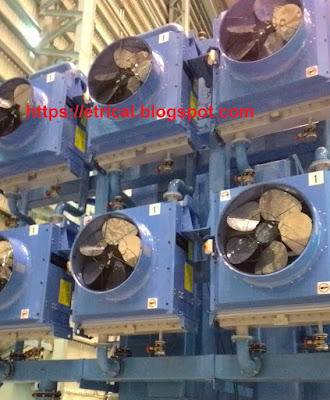Because of flow of electric current through the winding of Transformer and due to core losses, heat is produced in the windings and core. Because of this heat the temperature of Transformer oil increases. Thus cooling of Transformer Oil is must as we know that the rating of any electrical equipment depends upon its allowable temperature rise limit.
As we know that increasing the surface area increases the rate of cooling. Therefore by any mean if we can increase the surface area of Transformer Oil then cooling of Transformer Oil can be accelerated. Radiator of Transformer serves this purpose of increasing the surface area of Oil. Cooling in Radiator is due to natural convection in the Transformer Oil.
Radiator Banks are sent separately from the Manufacturing Unit to the Site because of bulky nature. At site, Radiator banks are assembled. While assembling radiator banks, care must be taken else any damage will lead to the Transformer Oil leakage.
Because of Bulky size of Radiator, modern Power Transformers have coolers instead of radiator for cooling of Oil as shown in figure below.
The use of Oil coolers has many advantages over Radiator bank. By Oil coolers Transformer Oil cooling is efficient and Rating of Transformer can be increased. Also, it takes less space when compared with Radiator bank. The only disadvantage is that Oil Cooler is not passive system whereas Radiator Bank is a passive system which does not require any power supply for cooling.

